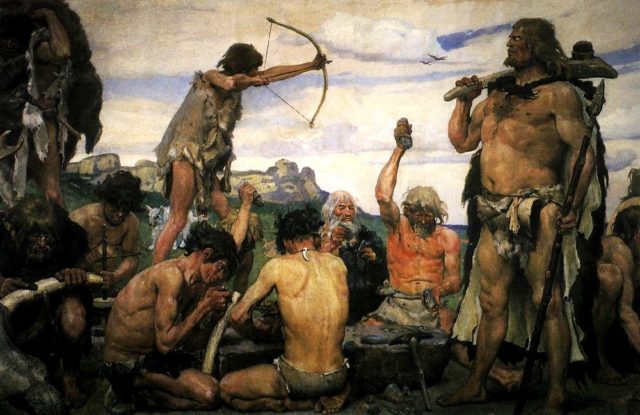Well before humans used spears and bows, they learned to throw ball-shaped rocks to take down their prey on the African plains. Evidence of such hunting methods has been found at excavation sites across the entire continent of Africa.
Research has shown that our ancestors were capable of throwing rocks as far as 80 feet to hit their prey, with accuracy comparable to modern-day sporting professionals. These stones were the perfect weight to injure an animal, making the stones an amazingly versatile tool. And while the stones alone could not kill their prey, they were used with other tools to hunt and protect themselves against the harsh African ecosystem where animals could easily take down weaker humans.
The finding has led scientists to a better understanding of tribes working together during the period. But we still have a lot to learn about people that lived half a million years ago. Historians are starting to shed light on life during that time and are starting to recognize that Stone Age humans were more sophisticated than previously thought.
A team of archaeologists found a pile of spherical rocks around the remains of what is believed to be a very early human. So far 55 stones have been unearthed at a significant archaeological site in South Africa. The location, Makapan Valley, is widely renowned as one of the most crucial regions in the rise of human civilization. Even though humans existed as long as three million years ago, South Africa is considered crucial for the development of human life over the next couple million years.

After close analysis, the carbon dating of the rocks allowed the scientists to recover data from as early as 70,000 BC all the way back to 1.8 million years ago.
Even though these spherical rocks made for a great hunting weapon, it’s believed they were used to shape other tools our ancestors needed during the Stone Age. The team sat down and simulated the type of damage that could have been caused by the hunters and found out that just over 80% of the stones could have injured the game well enough to disable the prey as far as 25 meters out. A single blow wouldn’t kill an animal, but it would have certainly helped humans work together to capture the prey very easily after it was wounded. The collection of rocks was found to have been the perfect size to be widely used by Stone Age humans.
Dr. Andrew Wilson, who leads the research team, suggests that even though other animals have been found throwing things every once in a while, humans have an unparalleled power to wield objects like no other species. This is due to the way humans both physically developed, as well as our mental skills and analysis. According to this new study, it seems that throwing was a crucial part of human development and that throwing weapons could have been used as far back as two million years ago.

This advantage allowed early humans to become inventors and warriors unlike any animal before them. While other prey was physically superior, the use of tools allowed humans not only to survive but to thrive throughout the Stone Age. This development allowed people to migrate and expand across the world due to the rising population, ensuring the success and safety of the human species. The use of spherical rocks is the perfect example of utilizing tools to make life during the Stone Age a little safer. The balls were perfect for fending off the fierce predators and in the area from a safe distance while simultaneously giving people the art of stealth and surprise when hunting for food. It was much easier to catch animals off guard if they could safely strike from a distance.
The findings suggest that humans had the ability to reflect, analyze and solve more complex problems than any other species during that era. It seems that for a while, the stones puzzled analysts as to why they were needed. The new study brings to light the power of the human mind, and it seems that both historians and archaeologists both underestimated the power of the human mind during the earlier times of the Stone Age.
It seems that pretty quickly after the evolution of humans the mind developed to solve complex problems. And even though hunting might not have been the primary use of the stones, there is no denying the power the human mind gave over other species of the time.
